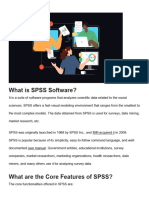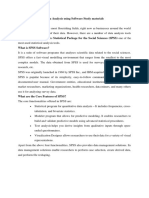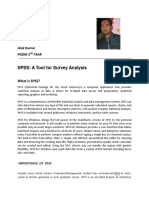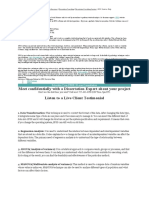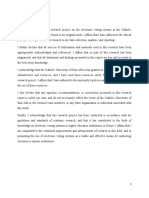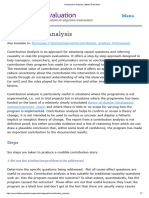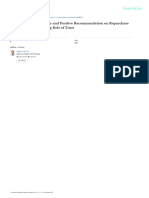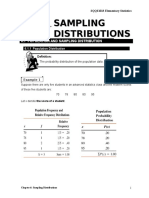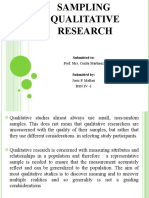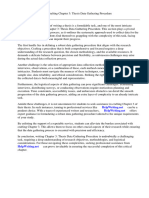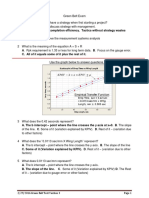0% found this document useful (0 votes)
16 views11 pagesSPSS
SPSS, or Statistical Package for the Social Sciences, is a comprehensive software suite for analyzing scientific data in social sciences, first launched in 1968 and acquired by IBM in 2009. It offers a variety of features for statistical analysis, predictive modeling, and data visualization, making it widely used across industries such as market research, education, healthcare, and retail. While SPSS provides powerful tools for data analysis, it has limitations in handling big data and may yield misleading results if the data collection methods are flawed.
Uploaded by
Shama ParwinCopyright
© © All Rights Reserved
We take content rights seriously. If you suspect this is your content, claim it here.
Available Formats
Download as DOCX, PDF, TXT or read online on Scribd
0% found this document useful (0 votes)
16 views11 pagesSPSS
SPSS, or Statistical Package for the Social Sciences, is a comprehensive software suite for analyzing scientific data in social sciences, first launched in 1968 and acquired by IBM in 2009. It offers a variety of features for statistical analysis, predictive modeling, and data visualization, making it widely used across industries such as market research, education, healthcare, and retail. While SPSS provides powerful tools for data analysis, it has limitations in handling big data and may yield misleading results if the data collection methods are flawed.
Uploaded by
Shama ParwinCopyright
© © All Rights Reserved
We take content rights seriously. If you suspect this is your content, claim it here.
Available Formats
Download as DOCX, PDF, TXT or read online on Scribd
/ 11

